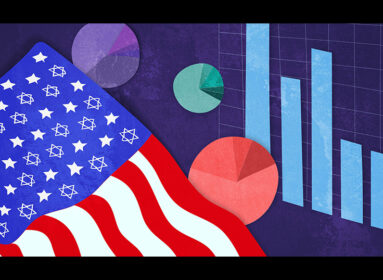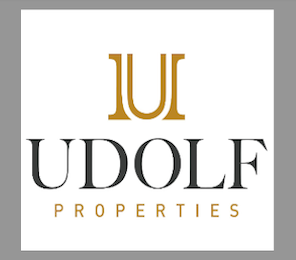Chaim Gross celebrated at Greenberg Center
By Cindy Mindell
 WEST HARTFORD – Chaim Gross is considered among the finest figurative sculptors of the 20th century, known for his fluid works portraying circus figures, mothers with their children, dancers and children at play.
WEST HARTFORD – Chaim Gross is considered among the finest figurative sculptors of the 20th century, known for his fluid works portraying circus figures, mothers with their children, dancers and children at play.
But there is another side to the artist, lesser known, which will be the focus of a new exhibit opening at the Maurice Greenberg Center for Judaic Studies in West Hartford next month.
The idea for the show, highlighting the artist’s Jewish and Israeli themed works, was first sparked two years ago. In July 2011, the New Britain Museum of American Art presented “The Tides of Provincetown: Pivotal Years in America’s Oldest Continuous Art Colony (1899-2011).” Among the 100-plus artists represented was Chaim Gross, an Austrian-born American sculptor active from the ‘20s until his death in 1991 and known for his figurative works. Prof. Avinoam Patt of the Greenberg Center suggested a “Tides of Provincetown” evening program dedicated to Gross, featuring a documentary film of the artist made by Greenberg Center friend and art collector Joel Grae two years before Gross’s death.
Among the program participants were the artist’s daughter, Mimi Gross, and Dr. Susan Fisher, both of the Renee and Chaim Gross Foundation in Greenwich Village. Fisher and Patt came up with the idea for an exhibit of Gross’s work, focused on the artist’s first trips to Israel, that would coincide with the Greenberg Center’s Israel at 65 programming.
“When I mention his sculpture, ‘The Tourists,’ which sits in front of the Provincetown Library, many people realize that they know Chaim Gross’s work,” says Patt. “What’s less well known is his connection to Judaism and Israel.”
“Visions of Israel: The Art and Illustrations of Chaim Gross,” will be the first exhibition of its kind to examine the artist’s relationship with the State of Israel. Chaim Gross was born into a Chasidic
family in 1902 in the Galician village of Wolowa, East Austria. He studied at the National Academy of Fine Arts in Budapest in 1919 and at the Kunstgewerbeschule in Vienna in 1920. In 1921, Gross emigrated to New York with his brother Avrom-Leib, sponsored by their brother, Naftoli, a well-known Yiddish scholar and poet. He attended classes, in Yiddish, at the Educational Alliance Art School from 1921 to 1926, where he would teach for 60 years. He also studied at the Beaux-Arts Institute of Design. In the ‘30s, he taught art at the Workman’s Circle summer camp and presented his work in the first Yidisher Kultur Farband, World Alliance for Yiddish Culture.
His brother, sister, brother-in-law, niece, and nephew were exterminated by the Nazis. Gross’s work began to take on Jewish themes in 1947, when he carved “In Memoriam: My Sister Sarah, Victim of Nazi Atrocities,” now in the Hirschhorn Museum, in Washington D.C.
The following year, he served on the art committee with Abbo Ostrowsky and seven others for the art exhibition of the World Congress for Jewish Culture, held in New York City. Together with 11 fellow artists, Gross collected works and donated one of his sculptures to “American Artists for Israel” organized that same year by the Jewish Museum in New York. The exhibit included the works of more than 100 American artists that were donated to the Tel Aviv Museum of Art, the Bezalel Academy of Art and Design in Jerusalem, and the Museum of Art Ein Harod. In 1949, on his first trip to Israel, Gross attended the opening of the Tel Aviv Museum of Art.
The enormity of the destruction of European Jewry, combined with Gross’s personal losses, motivated a change in his art. His renewed emotional involvement with Judaism was also reinforced by his first visit to Israel, where he observed Chasidic Jews who reminded him of his own family and friends from early childhood in Austria, as well as diverse groups of Jewish immigrants from North Africa and the Middle East. Gross’s first visit to Israel was in 1949 and he returned at least 20 times through the ‘70s. In an interview, he recalled: “When I went to Israel in 1949 and I saw my own kind of people – Orthodox Jews, Chasidic Jews – something happened to me, something was reawakened in me.”
That year, Gross was one of five finalists in a competition sponsored by the Jewish Museum in New York City to create a proposed Holocaust memorial in Riverside Park on New York’s Upper West Side.
Gross returned to Israel in 1951 for three months, painting a series of 40 watercolors of life scenes in various cities. The works were exhibited at the Jewish Museum in New York from May to July 1953, Gross’s first solo show there. Gross also created lithographs and posters addressing the same wide range of subject matter as his sculpture, watercolors, and drawings: homages to artists, Jewish themes, performers, delineations of his dreams (fantasy prints), mothers playing with children, and fishermen. He also created posters to mark various anniversaries of the establishment of modern Israel.
From 1950 to 1957, he carved seven variations in wood exploring the theme of Lot’s wife. Naomi and Ruth, featured in this exhibition, was carved in stone in 1956. During the 1960s, he designed and cast monumental menorahs for Temple Sinai in Pittsburgh, Congregation Adath Jeshurun in Elkins Park outside Philadelphia, and the Menorah Home for the Aged in Brooklyn, N.Y. He created six
9 1/2-foot-high bronze relief panels of the Ten Commandments for the International Synagogue at Kennedy International Airport, and “The Six Days of Creation,” a group of lithographs which complements the large bronze relief panels on the same subject at Temple Shaaray Tefila in New York. A series of watercolors explores “Jewish Customs.”
While not a practicing Jew, Gross was involved in Jewish organizations and causes from the time he arrived in the U.S. As a contribution to the United Jewish Appeal’s 1967 campaign, Gross created an original lithograph based on the Babylonian Talmud Mishnah, “Whoever saves a life has saved the entire world.”
A fellow of the Jewish Academy of Arts and Sciences, he was committed to Jewish educational endeavors. He was awarded an honorary doctorate by Yeshiva Unversity nd created a bust of then-president Dr. Samuel Belkin.
In the ‘80s, he was a member of the Collections and Acquisitions Committee of the United States Holocaust Memorial Museum.
He created a lithograph, “Children’s Game,” for the Israel Museum to sell, and another, “Homage to Sigmund Freud,” for Hebrew University. In addition, he donated 42 African artworks from his private collection to the Israel Museum. In addition to museum collections, Gross’s public sculptures adorn the grounds of several Israeli academic campuses and Hadassah-Hebrew University Medical Center
in Jerusalem.
“Chaim Gross is an artist who essentially had two careers,” Patt says. “He was an integral part of the downtown New York art scene and developed a reputation as one of the finest figurative sculptors of the 20th century. Then, starting in the late ‘40s, his work shifted to Jewish themes and the State of Israel.”
The Greenberg Center show will include sketchbooks never exhibited before, which Gross filled on his first two trips to the new Jewish state, in 1949 and 1951, as well as a wealth of other works from that phase of the artist’s career – lithographs created on behalf of the state to honor anniversaries of Israel’s creation; bronze sculptures exploring Jewish themes; busts of Israeli President Chaim and Vera Weizmann; and a lithium stone sculpture of the biblical Naomi and Ruth.
“You can see a shift in his work,” Patt says. “He is an artist and he is Jewish but he does not want to be pigeonholed as a ‘Jewish artist.’ We realize that he will be appreciated by different people for different reasons: some love his devotion to the fluid form, and then there are those who will love his art with biblical themes or from Israel or relating to the Holocaust.”
During the 1970s, Old Testament subjects and Judaica predominated in Gross’s art. In 1976, he created sculptures of “Jacob’s Dream,” “Abraham and the Angels,” “In Memory of Six Million,” “Isaiah,” and “Jonah and the Whale.” Still, Gross did not consider these sculptures “Jewish art.” In Grae’s film, Gross says, “There is no Jewish art. Don’t call it Jewish art, because it is subject matter, not style. There are Jewish traditions, Judaica, and biblical subjects, and, also, artists who are Jews, but there is no Jewish art.”
Among the more intriguing documents Patt studied at the Renee and Chaim Gross Foundation is a failed Fulbright application the artist submitted, explaining that he wanted to go to Israel and capture the mass migration of Jews coming from all over the world. He wrote, “My project was born during a short stay in Israel recently. I discovered a very moving and beautiful spectacle which will one day
disappear. The influx of Jewish immigrants from most parts of Europe and the Near East brought a wealth of contrasts into a land where they will be absorbed and become as one, losing all of their individuality. There has come into Israel, Yemenites, Iraqui (sic), Moroccans, Persians, North Africans, Austrians, Rumanians, Germans, Polish, Bulgarians, and many other Jews, all with distinctly different features, physiognomy, even movement and culture.
It is especially those who have come from the Near East countries that I wish to capture in sculpture….” “Gross had a sense that the distinct Jewish civilizations would all be lost in the
melting pot stew,” Patt says. “He had the foresight to capture the moment from 1949 to 1951, before these different types of people would disappear. This is the true eye of the artist, and as a historian, I feel that it’s important to appreciate his vision.”
In an undated manuscript among the Gross Foundation’s collections, Gross described his relationship with Israel. He wrote, “As an aspiring artist who came to America a penniless boy of seventeen, I benefitted from the opportunities it gave me to live, to study, to grow on social and political freedom. I was inspired by the biblical principles of Justice and Compassion that guided it….and for the same reasons that I have loved America, I love Israel.
“But I do so as well, of course, out of deep personal identification with an historical and spiritual heritage of more than 5,000 years, that is there to sustain every Jewish person, wherever he may be in the world.”
“Visions of Israel: The Art and Illustrations of Chaim Gross” opens at the University of Hartford Greenberg Center’s Museum of Jewish Civilization, Wednesday, Apr. 3 with an introductory lecture by Prof. Avinoam Patt. The exhibit runs through May and opens again in September, through Nov. 1. Information: (860) 768-4964.
Comments? email cindym@jewishledger.com.








 Southern New England Jewish Ledger
Southern New England Jewish Ledger










